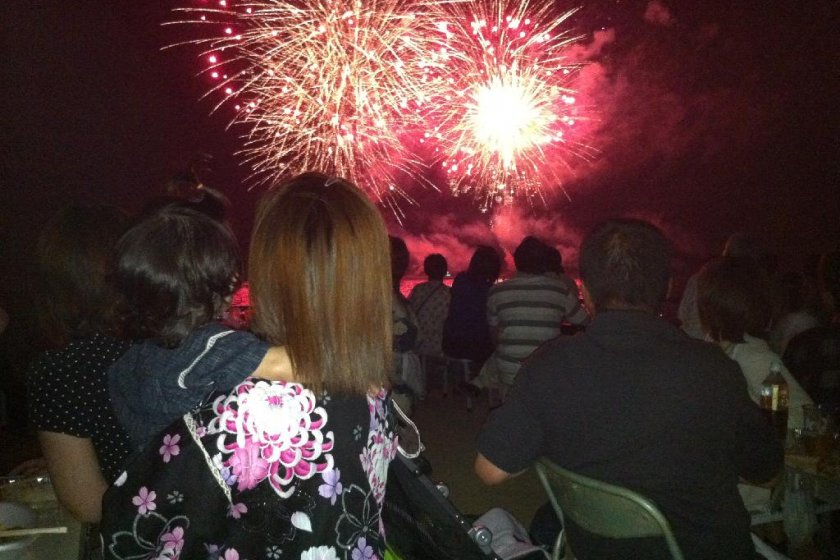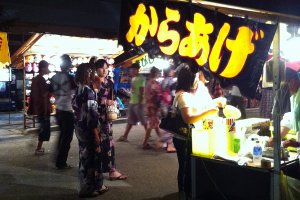In the summer months, local fireworks events are held all over rural Japan. Organized by sundry Rotary Clubs, Lions Clubs and Chambers of Commerce, they are typically quite spectacular, reflecting the pride of the local area, and they draw crowds in the hundreds and thousands.
The Kazahaya Umi Matsuri (Kazayaha Sea Festival) is typical of these events. The Kazahaya area, otherwise known as Hojo, outside Matsuyama is dominated by Kashima Island, a single blob of mountain deposited just offshore. The fireworks are launched from the long piers jutting out northwards from Kashima, and the festival goers gather on the quayside and in the port that serves Kashima just across the water. Those with connections and time to organize procure themselves a fishing boat, load it up with necessities such as cold beer, and bob about in the channel, craning their necks to see the fireworks almost directly above their heads. The area closest to Kashima on the mainland is cordoned off for those who wish to pay 5,000 yen for a camping table that seats four, with use of temporary toilets and hand washing facilities. Otherwise, entry is free, and unreserved seating is available.
The event features a good selection of whizzers, fizzers, squeakers, bangers and thumpers, with stars, planets, flowers, hearts, palm trees and other fantastic shapes of momentary duration. The biggest fireworks are loud enough to make your chest thump and fill up your whole field of view. I was sitting next to a gentleman who couldn’t help exclaiming “Do-on!” every time a big one went off. I must say, I sympathized. I might even have said “Do-on!” myself once or twice. The fireworks and smoke, the shape of Kashima looming in the dark, and the lights of the port and boats churning back and forth present a very compelling spectacle.
Besides the fireworks, the stalls that line the streets and port are fun too. They sell an amazing array of generally unhealthy but satisfying snacks, cold drinks of every variety, toys that flash and whir, and goldfish. Gaudily painted and illuminated from within, the stalls suck in the crowds. The crowds themselves are a fine sight too. People in Ehime like to put on traditional clothing for festivals. The women appear dressed in bright, flowery yukata belted high below the bust, while the men wear darker colors belted low above the hips. There is much clacking of wooden sandals.
It’s best to go by train or bicycle if possible so that you can enjoy the cold beer on tap, and avoid the jam of cars that appears almost as soon as the gunpowder smoke has cleared. The nearest station is Iyo-Hojo on the JR line.

























